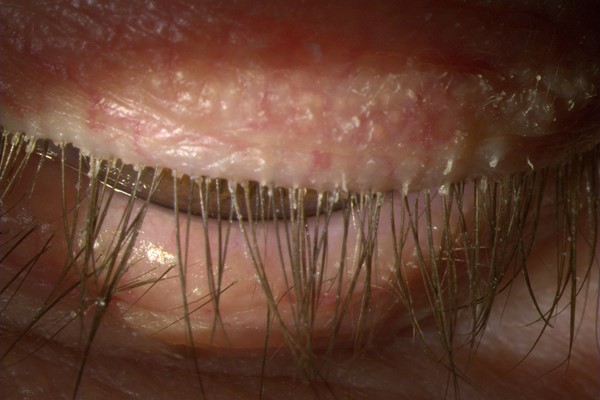Blepharitis and Evaporative Dry Eye
Blepharitis and dry eye go hand in hand and can have a significant impact on your quality of life. A healthy tear film is essential for good vision and to keep the eye safe. It is the first layer of defence against the outside world and along with your eyelids, the tear film helps keep your eyes and vision safe from infection and damage to the delicate underlying structures. 85% of dry eye is ‘evaporative’ and blepharitis is an important underlying cause. The other type of dry eye is ‘aqueous deficiency’ dry eye, as a result of insufficient tear production. This is where the tear gland does not produce enough of the watery part of the tear film.
Blepharitis comes from the Greek word ‘blepharos,’ meaning eyelid and ‘itis,’ meaning inflammation. It affects the oil (meibomian) glands which are located in the tarsal plate of the upper and lower eyelid. There are between 20 – 30 in each eyelid and they produce the oily layer, which is the outermost layer of the tear film (yes the tear film is made of up different layers!). The oily layer helps keep the tear film stable, and helps it remain adherent to the ocular surface between blinks, which are typically 10-15 seconds apart. Without this oily layer, the tear film will break up and the tears will not coat the surface of the eye effectively. This is measured using the tear film break-up time (TBUT), which is reduced if the tear film breaks up too quickly. A less stable tear film produces a dry ocular surface or ‘dry eye’ and the tears evaporate more quickly.
The meinomian glands are affected by eyelid margin disease such as blepharitis, which in turn is associated with rosacea. These conditions give the appearance of red inflamed skin and eyelid margins. They are incredibly common and over 60 per cent of patients in an eye clinic will have evidence of blepharitis and
As well as compromising the tear film and giving dry and uncomfortable eyes, having rosacea, blepharitis and meibomian gland dysfunction increases the chance of having recurrent styes (meibomian cysts or chalazion).
The traditional treatment of hot compresses and eyelid wipes is essential for maintenance of healthy eyelids.
- The heat and pressure from the hot compresses, helps reduce the viscosity of the oils in the meibomian gland and the pressure helps express this onto the ocular surface and stop the glands ‘clogging up.’
- The eyelid wipes help remove debris from the ocular surface, and this helps the openings to the glands allow the oily secretions to be released more freely onto the ocular surface therefore making a more stable tear film.
Demodex mites
Small micro-organisms called Demodex, a form of mite, are commonly found on the skin of the face and eyelid. Demodex contribute to the inflammation at the eyelid margin and in rosacea, the whole face. These are associated with rosacea, blepharits and meibomian gland dysfunction. The mites cannot be seen directly but the debris they leave behind forms a sleeve around the base of the eyelashes and this gives away their presence.
 Demodex
Demodex
To treat Demodex mites, the following treatments can be helpful:
- Eyelid wipes help to remove debris from the eyelid margin and as this debris is what the Demodex feed on, the action of wiping the lids will help reduce the Demodex burden. As well as the usual Optase or Blephaclean eyelid wipes, there are more specific wipes such as Blephademodex, which are useful against this form of disease.
- Demodex do not like Tea Tree Oil. This should not be used neat as it is an irritant, however it is available premixed as shampoo and face wash, both of which can be obtained easily from a local shop or pharmacy. Higher concentrations of Tea Tree Oil can be toxic to the meibomian glands, whereas lower concentrations are not as effective so this can be difficult to titrate to the Demodex load.
- Intense Pulsed Light treatment (IPL) is an effective treatment for Demodex blepharitis. If the above treatments have been tried and are either not effective or if they are proving too onerous, IPL can be used to help treat blepharitis and rosacea. It is particularly effective as it is often used to treat the whole face. As Demodex live across the whole face, treatment localised to the eyelids often does not offer persistent relief. Optilight from Lumenis is the gold standard and is the only IPL that is FDA approved for this purpose.
Treating blepharitis will help the oily layer of the eyelid remain intact and give a healthier tear film. This helps reduce the redness of the eye and improves comfort. It also helps improve the vision as the tear film is the most important refractive surface of the eye due the the change in refractive index from air to tear film. Blepharitis increases the risk of infection if surgery such as cataract surgery is planned and it is vital to treat blepharitis preoperatively. In some cases, surgery may be cancelled if there is significant blepharitis.

